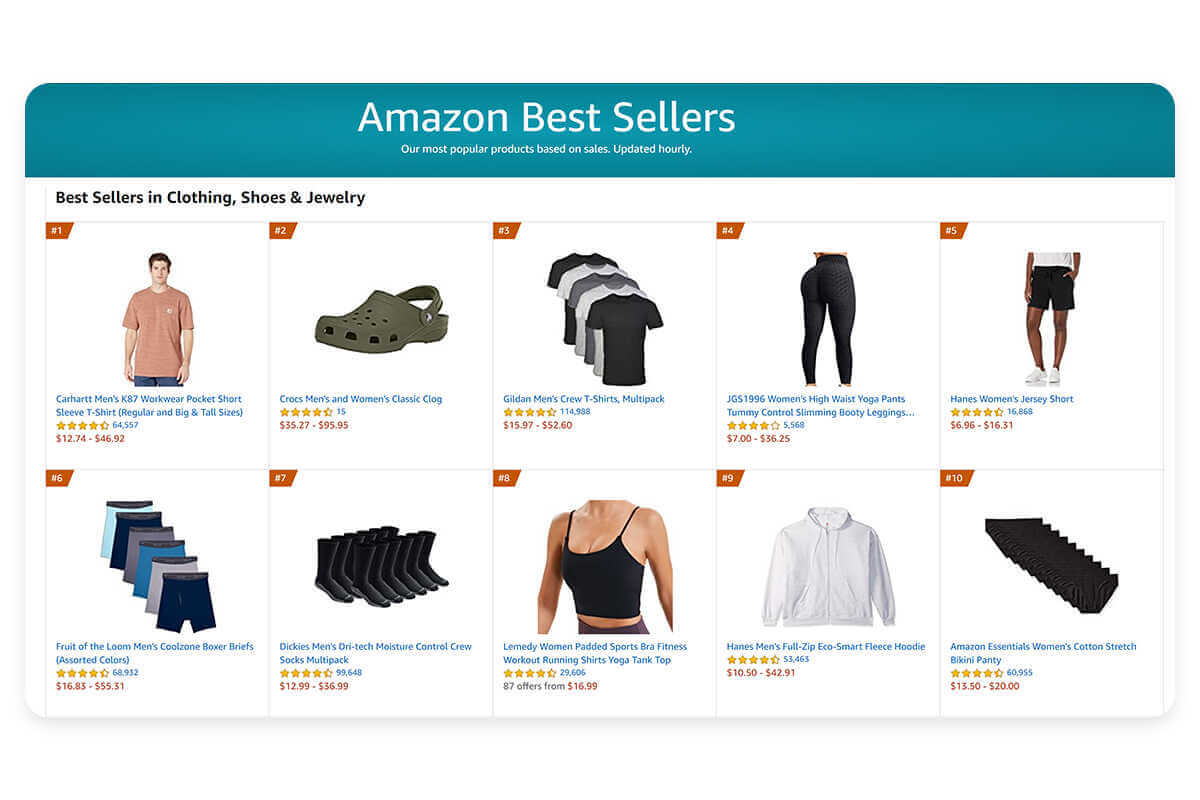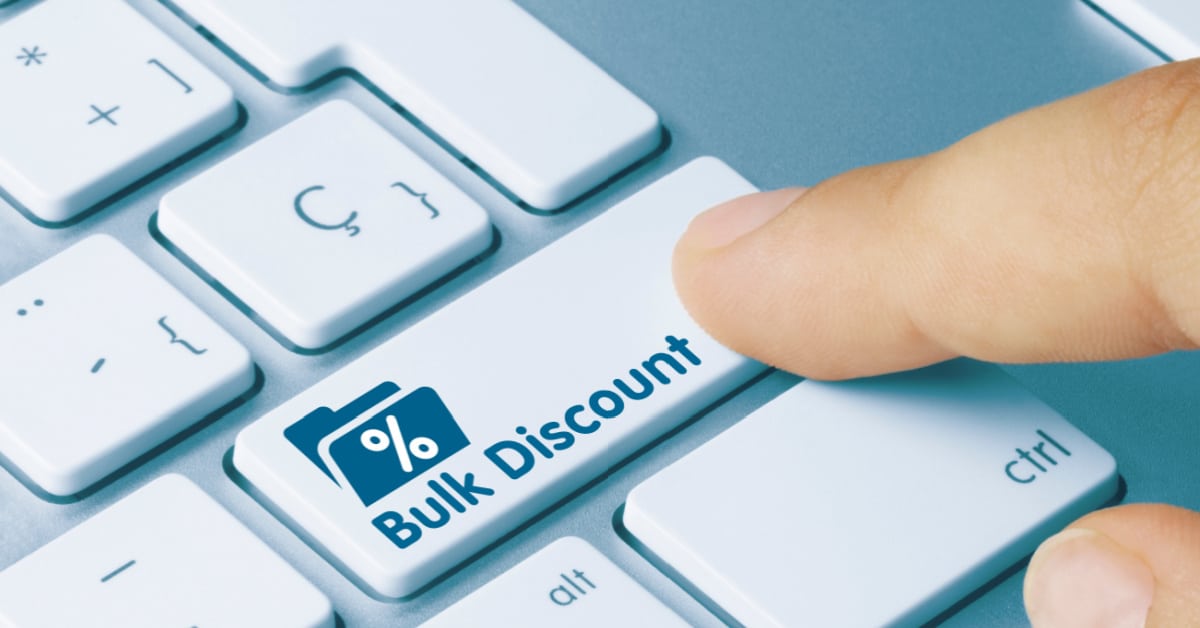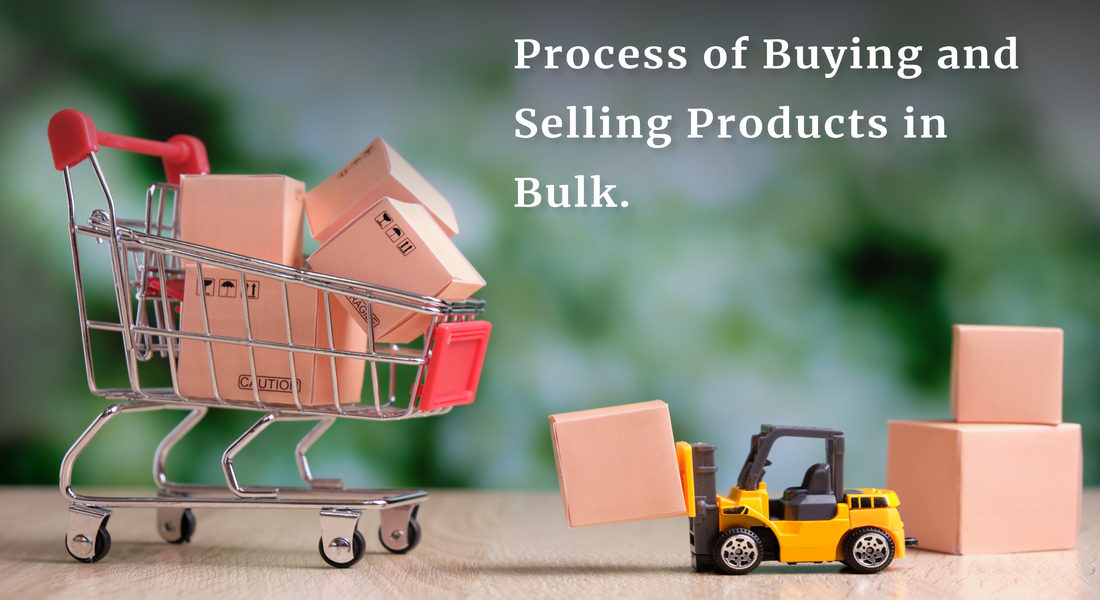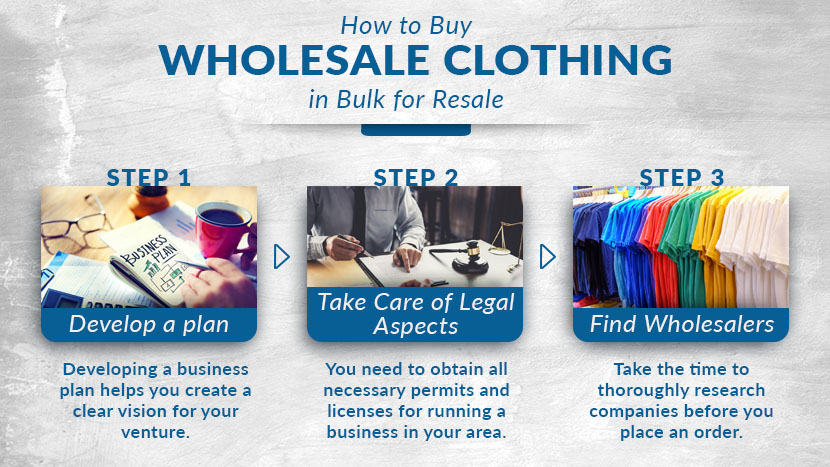Unlocking the Potential of Wholesale Purchases
Buying in bulk and reselling products can be a lucrative business venture, offering a range of benefits for entrepreneurs and small business owners. By purchasing products at wholesale prices, individuals can significantly reduce their costs and increase their profit margins. This strategy can be applied to various products and markets, from electronics and household items to personal care products and clothing.
One of the key advantages of buying in bulk is the ability to negotiate better prices with suppliers. By purchasing large quantities of products, individuals can often secure lower prices per unit, which can be passed on to customers or used to increase profit margins. Additionally, buying in bulk can help to reduce shipping costs and minimize the need for frequent reordering.
However, buying in bulk also requires careful planning and research. It is essential to identify products that are in high demand and have a strong potential for resale. This can be achieved by researching popular products and trends, using online tools such as Amazon Best Sellers and Google Trends. By understanding what products are in demand, individuals can make informed purchasing decisions and maximize their chances of success.
Furthermore, buying in bulk and reselling products can be a flexible and adaptable business model. It can be operated on a small scale, with minimal upfront costs, making it an attractive option for entrepreneurs and small business owners. Additionally, the business can be easily scaled up or down, depending on market conditions and demand.
Some popular things to buy in bulk and resell include electronics, such as smartphones and laptops, household items, such as kitchen appliances and furniture, and personal care products, such as skincare and haircare items. These products are often in high demand and can be purchased at wholesale prices, making them ideal for resale.
By understanding the benefits and potential of buying in bulk and reselling products, individuals can unlock new business opportunities and increase their earning potential. Whether operating on a small or large scale, this business model offers a range of advantages, from reduced costs and increased profit margins to flexibility and adaptability.
Researching In-Demand Products: A Guide to Finding the Best Buys
Before making bulk purchases, it’s essential to research popular products and trends to ensure that you’re buying things that will sell quickly and for a profit. One of the best ways to do this is by using online tools such as Amazon Best Sellers and Google Trends. These tools provide valuable insights into what products are currently in demand and which ones are trending upwards.
Amazon Best Sellers, for example, provides a list of the top-selling products on Amazon, which can be filtered by category, price, and customer reviews. This can help you identify products that are currently in high demand and have a strong potential for resale. Google Trends, on the other hand, provides information on search volume and trends, which can help you identify products that are gaining popularity.
In addition to using online tools, it’s also important to stay up-to-date with industry trends and news. This can help you identify emerging trends and products that are likely to be in high demand in the future. You can do this by reading industry publications, attending trade shows, and following industry leaders on social media.
Another way to research in-demand products is by analyzing customer reviews and feedback. This can help you identify products that are popular with customers and have a strong potential for resale. You can do this by reading customer reviews on Amazon, eBay, and other online marketplaces.
Some popular things to buy in bulk and resell include electronics, such as smartphones and laptops, household items, such as kitchen appliances and furniture, and personal care products, such as skincare and haircare items. These products are often in high demand and can be purchased at wholesale prices, making them ideal for resale.
By researching in-demand products and staying up-to-date with industry trends, you can make informed purchasing decisions and increase your chances of success in the reselling business. Remember to always do your research and analyze customer feedback before making bulk purchases, and to stay flexible and adapt to changing market conditions.
Top Products to Buy in Bulk and Resell for Maximum Profit
When it comes to buying in bulk and reselling, it’s essential to focus on products that are in high demand and have a strong potential for profit. Here are some top products to consider, including examples of electronics, household items, and personal care products.
Electronics are always in high demand, and buying in bulk can help you secure the best prices. Some popular electronics to consider include:
- Apple AirPods: These wireless earbuds are a top seller, and buying in bulk can help you secure a low price per unit.
- Samsung Smartphones: Samsung smartphones are always in high demand, and buying in bulk can help you secure a good price.
- Amazon Echo Devices: Amazon Echo devices are popular smart home devices that can be bought in bulk and resold for a profit.
Household items are also in high demand, and buying in bulk can help you secure the best prices. Some popular household items to consider include:
- Nike Sneakers: Nike sneakers are always in high demand, and buying in bulk can help you secure a low price per unit.
- Levi’s Jeans: Levi’s jeans are a classic fashion item that can be bought in bulk and resold for a profit.
- KitchenAid Appliances: KitchenAid appliances are high-quality kitchen items that can be bought in bulk and resold for a profit.
Personal care products are also in high demand, and buying in bulk can help you secure the best prices. Some popular personal care products to consider include:
- Skincare products from Neutrogena and Olay: These skincare products are popular and can be bought in bulk and resold for a profit.
- Haircare products from Pantene and TRESemmé: These haircare products are popular and can be bought in bulk and resold for a profit.
- Oral care products from Crest and Colgate: These oral care products are popular and can be bought in bulk and resold for a profit.
When buying in bulk, it’s essential to research the market demand and competition to ensure that you’re buying products that will sell quickly and for a profit. You can use online tools such as Amazon Best Sellers and Google Trends to research popular products and trends.
By focusing on these top products and doing your research, you can increase your chances of success in the reselling business and maximize your profits.
How to Negotiate with Suppliers and Get the Best Deals
Negotiating with suppliers is a crucial step in buying in bulk and reselling products for profit. By building relationships with suppliers and understanding pricing structures, you can secure the best prices for your bulk purchases. Here are some tips on how to negotiate with suppliers and get the best deals:
Building Relationships with Suppliers
Building relationships with suppliers is key to getting the best deals. By establishing a rapport with your suppliers, you can negotiate better prices and secure exclusive deals. To build relationships with suppliers, focus on being responsive, reliable, and respectful. Respond promptly to their inquiries, pay your bills on time, and treat their staff with respect.
Understanding Pricing Structures
Understanding pricing structures is essential to negotiating the best deals. Suppliers often have different pricing tiers for different customers, and by understanding these tiers, you can negotiate a better price. Ask your suppliers about their pricing structures and see if you can negotiate a better price based on your bulk purchase.
Using Online Marketplaces to Compare Prices
Online marketplaces like Alibaba, Thomasnet, and Wholesale Central can help you compare prices from different suppliers. By comparing prices, you can negotiate a better deal with your supplier. Make sure to research the supplier’s reputation and product quality before making a purchase.
Negotiation Strategies
When negotiating with suppliers, use the following strategies to get the best deals:
- Start with a low offer: Start with a low offer and negotiate upwards. This will give you room to negotiate and secure a better price.
- Be flexible: Be flexible with your pricing and payment terms. Suppliers may be willing to negotiate a better price if you’re willing to pay upfront or make a larger purchase.
- Use data to your advantage: Use data to your advantage by researching the market price of the product and negotiating a better price based on that data.
By following these tips, you can negotiate the best deals with your suppliers and secure the lowest prices for your bulk purchases. Remember to always be respectful and professional when negotiating with suppliers, and don’t be afraid to walk away if the deal isn’t right.
When buying in bulk and reselling products, it’s essential to negotiate the best deals with your suppliers. By building relationships with suppliers, understanding pricing structures, and using online marketplaces to compare prices, you can secure the lowest prices for your bulk purchases. Remember to always be flexible and use data to your advantage when negotiating with suppliers.
Understanding Your Target Market: Who to Sell to and How
When it comes to buying in bulk and reselling products, understanding your target market is crucial to success. Identifying the right audience and sales channels can help you maximize your profits and minimize your risks. Here are some tips on how to understand your target market and identify the best sales channels for your products:
Identifying Your Target Market
Your target market is the group of people who are most likely to buy your products. To identify your target market, you need to research your potential customers and understand their needs, preferences, and behaviors. You can use online tools such as Google Trends and Amazon Best Sellers to research popular products and trends, and identify gaps in the market that your products can fill.
Understanding Your Customers’ Needs and Preferences
Once you have identified your target market, you need to understand their needs and preferences. What are their pain points? What are they looking for in a product? What are their shopping habits? By understanding your customers’ needs and preferences, you can tailor your marketing efforts and sales channels to meet their demands.
Sales Channels for Your Products
There are several sales channels that you can use to sell your products, including social media, online marketplaces, and local advertising. Here are some tips on how to use each of these sales channels effectively:
- Social Media: Use social media platforms such as Facebook, Instagram, and Twitter to reach your target market. Create engaging content that showcases your products and provides value to your customers.
- Online Marketplaces: Use online marketplaces such as Amazon, eBay, and Etsy to sell your products. These platforms have a large customer base and can help you reach a wider audience.
- Local Advertising: Use local advertising such as Google Ads and Facebook Ads to reach customers in your local area. These platforms can help you target specific demographics and interests.
By understanding your target market and identifying the best sales channels for your products, you can maximize your profits and minimize your risks. Remember to always keep your customers in mind and tailor your marketing efforts and sales channels to meet their demands.
When buying in bulk and reselling products, it’s essential to understand your target market and identify the best sales channels for your products. By researching your potential customers and understanding their needs and preferences, you can tailor your marketing efforts and sales channels to meet their demands. Use social media, online marketplaces, and local advertising to reach your target market and maximize your profits.
Managing Your Inventory and Streamlining Your Reselling Process
When buying in bulk and reselling products, managing your inventory and streamlining your reselling process is crucial to success. A well-managed inventory can help you minimize costs, maximize efficiency, and ensure that you’re always able to meet customer demand. Here are some tips on how to effectively manage your inventory and streamline your reselling process:
Storing Your Inventory
When storing your inventory, it’s essential to consider the size, weight, and fragility of the products. You’ll want to store your products in a dry, secure location that is easily accessible. Consider using shelving units, bins, and containers to keep your products organized and easy to find.
Tracking Your Inventory
Tracking your inventory is critical to ensuring that you’re always aware of what products you have in stock and what products need to be reordered. Consider using an inventory management system, such as TradeGecko or Zoho Inventory, to track your products and automate your inventory management process.
Shipping Your Products
When shipping your products, it’s essential to consider the cost, speed, and reliability of the shipping method. Consider using a shipping carrier, such as USPS or UPS, that offers competitive rates and reliable service. You’ll also want to consider using shipping software, such as ShipStation or ShippingEasy, to streamline your shipping process and reduce costs.
Streamlining Your Reselling Process
Streamlining your reselling process can help you minimize costs, maximize efficiency, and ensure that you’re always able to meet customer demand. Consider automating your reselling process using software, such as Amazon Seller Central or eBay Seller Hub, to manage your listings, track your inventory, and fulfill your orders.
By effectively managing your inventory and streamlining your reselling process, you can minimize costs, maximize efficiency, and ensure that you’re always able to meet customer demand. Remember to always keep your customers in mind and tailor your inventory management and reselling process to meet their needs.
When buying in bulk and reselling products, managing your inventory and streamlining your reselling process is crucial to success. By storing your products in a secure location, tracking your inventory, shipping your products efficiently, and streamlining your reselling process, you can minimize costs, maximize efficiency, and ensure that you’re always able to meet customer demand.
Common Mistakes to Avoid When Buying in Bulk and Reselling
When buying in bulk and reselling products, it’s essential to avoid common mistakes that can lead to financial losses and damage to your reputation. Here are some common mistakes to avoid and tips on how to mitigate these risks:
Overstocking
Overstocking is one of the most common mistakes made by resellers. It can lead to financial losses and damage to your reputation if you’re unable to sell the products. To avoid overstocking, research the market demand and competition before making a bulk purchase. Use online tools, such as Amazon Best Sellers and Google Trends, to identify in-demand products and trends.
Underpricing
Underpricing is another common mistake made by resellers. It can lead to financial losses and damage to your reputation if you’re unable to cover your costs. To avoid underpricing, research the market prices and competition before setting your prices. Use online tools, such as Amazon Price Checker and eBay Price Guide, to determine the optimal price for your products.
Failing to Research Products Thoroughly
Failing to research products thoroughly is a common mistake made by resellers. It can lead to financial losses and damage to your reputation if you’re unable to sell the products. To avoid this mistake, research the products thoroughly before making a bulk purchase. Use online tools, such as Amazon Product Reviews and Google Product Search, to identify the pros and cons of the products.
Not Having a Clear Return Policy
Not having a clear return policy is a common mistake made by resellers. It can lead to financial losses and damage to your reputation if customers are unable to return products. To avoid this mistake, have a clear return policy in place and communicate it to your customers. Use online tools, such as Amazon Return Policy and eBay Return Policy, to determine the optimal return policy for your products.
By avoiding these common mistakes, you can ensure a successful reselling experience and build a loyal customer base. Remember to always research the market demand and competition, set optimal prices, research products thoroughly, and have a clear return policy in place.
When buying in bulk and reselling products, it’s essential to avoid common mistakes that can lead to financial losses and damage to your reputation. By researching the market demand and competition, setting optimal prices, researching products thoroughly, and having a clear return policy in place, you can ensure a successful reselling experience and build a loyal customer base.
Scaling Your Reselling Business: Tips for Long-Term Success
Scaling your reselling business requires careful planning, strategic decision-making, and a commitment to continuous improvement. Here are some tips to help you scale your reselling business and achieve long-term success:
Expanding Your Product Line
Expanding your product line can help you attract new customers, increase sales, and reduce dependence on a single product. Consider adding complementary products or products that are in high demand. Use online tools, such as Amazon Best Sellers and Google Trends, to identify in-demand products and trends.
Increasing Your Marketing Efforts
Increasing your marketing efforts can help you reach new customers, increase brand awareness, and drive sales. Consider using social media, online advertising, and email marketing to reach your target audience. Use online tools, such as Facebook Ads and Google Ads, to create targeted marketing campaigns.
Building a Loyal Customer Base
Building a loyal customer base is critical to long-term success. Consider offering excellent customer service, providing high-quality products, and offering loyalty programs to retain customers. Use online tools, such as customer relationship management (CRM) software, to manage customer interactions and build relationships.
Optimizing Your Operations
Optimizing your operations can help you reduce costs, increase efficiency, and improve customer satisfaction. Consider automating tasks, streamlining your inventory management, and using data analytics to make informed decisions. Use online tools, such as inventory management software and data analytics platforms, to optimize your operations.
By following these tips, you can scale your reselling business and achieve long-term success. Remember to always stay focused on your customers, continuously improve your operations, and adapt to changes in the market.
Scaling your reselling business requires careful planning, strategic decision-making, and a commitment to continuous improvement. By expanding your product line, increasing your marketing efforts, building a loyal customer base, and optimizing your operations, you can achieve long-term success and build a thriving reselling business.







